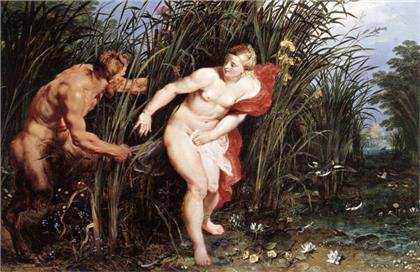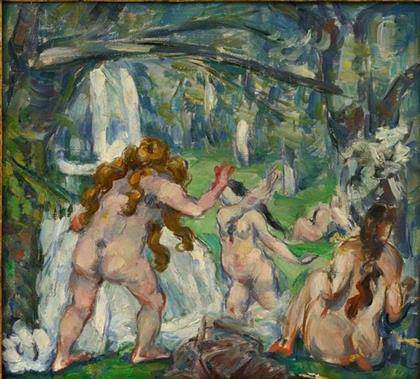
Peter Paul Rubens, Pan and Syrinx, 1617.
Oil on panel, 40 x 61 cm.
Museumslandschaft Hessen Kassel, Gemäldegalerie Alte Meister, Kassel.
Photo: Museumslandschaft Hessen Kassel, Gemäldegalerie Alte Meister/Ute Brunzel

Paul Cézanne, Three Bathers, 1875.
Oil on canvas, 30.5 x 33 cm.
Private Collection. Photo: Ali Elai, Camerarts
“Rubens and His Legacy” at the Royal Academy of Arts The Royal Academy of Arts presents ‘Rubens and His Legacy: Van Dyck to Cézanne’, the first major exhibition in the UK to examine Rubens’ influence on art history. 24 January – 10 April 2015.]]>
Source: Royal Academy of Arts, London
“Rubens and His Legacy: Van Dyck to Cézanne” is an exploration of the artisticlegacy of Peter Paul Rubens (1577–1640), the most influential of Flemish painters. The exhibitionbrings together masterpieces by Rubens and the artists who were inspired by him, during his lifetimeand up until the twentieth century, including Van Dyck, Watteau, Turner and Delacroix, as well asManet, Cézanne, Renoir, Klimt and Picasso. “Rubens and His Legacy” presents over 160 works,comprising paintings, drawings and prints drawn from some of the finest collections world-wide. Eachwork has been carefully considered for its significance to Rubens’ legacy.
One of the most prolific and sought after artists of his day, Rubens had an international list of patronsthat included members of some of the most important royal families in Europe, the aristocracy and theChurch. With an in-depth knowledge of Renaissance art, Rubens combined his studies of the ItalianMasters to develop his own style of lively realism and rich brushwork, creating monumental anddynamic paintings. His great versatility and immense capacity to produce work meant that his creativeoutput encompassed every genre of painting: altarpieces, family portraits, landscapes and historicaland mythological scenes. Whilst Rubens is most renowned for the depiction of his fleshy, sensuous“Rubenesque” women, the exhibition illustrates the breadth of his accomplishment and present anartist whose visual language, from composition to theme, style and colour, impacted on artists at thetime and has had continued resonance for artists throughout the centuries following his death.
“Rubens and His Legacy” is presented by six themes encompassing Poetry, Elegance, Power, Lust,Compassion and Violence. Each theme links the work of Rubens to subsequent generations of greatartists; starting with his assistant Van Dyck to Boucher and Watteau in the 1700s, Delacroix,Constable, Manet and Daumier in the 1800s, to Cézanne and Picasso 300 years after Rubens’ death.
Related content
Rubens, Van Dyck, Jordaens at Hermitage Amsterdam (exhibition, 2011-2012)
Follow us on:


